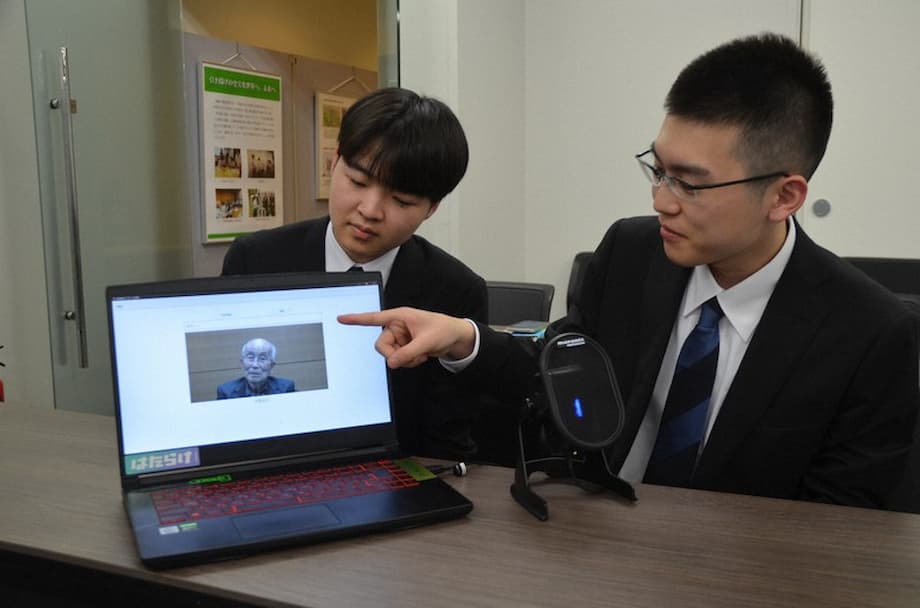An aging memory crisis at Japan’s war museums
Across Japan, institutions dedicated to documenting the devastation of World War II say they are racing against time. As the country marks 80 years since the war’s end, a large majority of war and peace memorial museums report that preserving first person memories is becoming difficult. The reasons are stark. The number of eyewitnesses keeps shrinking, volunteer storytellers are retiring, and operating budgets are tight. Many curators are also cautious about adopting artificial intelligence for exhibits, even as some peers test new tools to capture and share testimony.
- An aging memory crisis at Japan’s war museums
- Why preserving first person memories is getting harder
- AI enters the gallery, with caution
- What AI looks like in practice in Japan
- Funding models and local initiatives
- Reaching younger audiences beyond museums
- Global comparisons and lessons
- Ethics, consent, and historical integrity
- What success could look like this decade
- The Bottom Line
A nationwide questionnaire sent to war related museums drew responses from facilities that curate everything from atomic bombing experiences to records of air raids and military conscription. Of the museums that replied, nine in ten described the task of preserving memories as difficult or very difficult. Only a handful have put AI to use in their work, while a large group said they have not considered it. The outlook is not uniform, yet a common thread runs through the replies. Curators see fewer chances for visitors to hear living witnesses speak, and they fear that essential stories, dialects, and personal details will fade from public consciousness as storytellers pass away.
At smaller sites, the pressure is acute. Some museums now rely on a single surviving volunteer storyteller. Others note that most visitors are in their 60s or older, and that teachers have wide discretion over whether to bring peace related content into class time. Museums face a double challenge. They must secure and present testimony with authenticity, and they must make it accessible to younger audiences who live in a very different media environment.
Why preserving first person memories is getting harder
The demographic trend is clear. The population of atomic bomb survivors, known as hibakusha, is shrinking each year and their average age is now over 86. As of March, the official registry counted fewer than 100,000 hibakusha nationwide. Many who have long given talks in schools or at museum forums are now too old to travel, or they have died. Each passing year narrows the window for recording first person testimony in detail.
Museums also face uneven attention from the rising generation. Peace education is not a compulsory nationwide subject. Teachers who choose to address it often do so in limited units tied to local history, civic studies, or special field trips. That patchwork leaves gaps in exposure and understanding. Meanwhile, social media and short form video compete strongly for attention. A museum panel of text and photos can feel distant to teenagers unless it is presented with context and designed for participation.
Funding adds another layer. Smaller municipal museums regularly cite limited budgets for digitization, translation, and exhibit maintenance. Hiring dedicated staff to record and edit testimony, build searchable archives, add subtitles, or update interactive displays often depends on special grants or donations that vary year to year. The result is a cycle in which planning for long term preservation and outreach becomes difficult.
AI enters the gallery, with caution
In this landscape, museums are weighing new uses for AI. A small number have already implemented tools such as colorized photography or interactive consoles that replay answers from recorded interviews when visitors ask questions. A slightly larger group is considering similar steps. Many others have stayed away, citing concerns about authenticity and ethics. Curators worry that AI generated effects can detach visitors from the survivor’s personal feelings, fix a single interpretation of an image, or introduce the creator’s bias. Some question whether lifelike animations of real people cross a moral line.
The authenticity problem
Colorizing black and white photos or using AI to smooth old film can make historic content easier to watch on modern screens. The risk is that visitors may accept edited or reimagined visuals as literal truth. If the process adds assumed colors, removes grain, or changes motion, it can unintentionally reshape how viewers picture an event. Animating the face of a deceased person to lip sync speech is even more fraught. Without clear consent and labeling, it can feel like ventriloquism.
When technology helps more than it harms
Not all AI related tools generate new content. Some rely on structured databases of authentic testimony that is recorded in advance. In these systems, a visitor asks a question into a microphone and the software identifies keywords, then plays the most relevant pre recorded answer on a screen. The system does not write new words. It selects from a library of verified responses. Used with clear labels and documentation, this approach can raise engagement while preserving the survivor’s voice as the primary source.
What AI looks like in practice in Japan
Several museums and public institutions are testing careful, limited uses of technology to deepen connection with younger visitors. In one city, a peace museum has colorized a small set of wartime photographs. The goal is not to dramatize, but to help students pause and look more closely at faces and streetscapes that might otherwise feel remote. Curators report that teenagers spend more time at these stations and ask more questions during tours.
In Hiroshima, curators are preparing an interactive testimony system that stores many hours of survivor interviews and allows visitors to ask questions. The software selects the closest match and plays a direct answer from the recorded testimony. A similar console has already been demonstrated by local authorities in Kanagawa. It features an atomic bombing survivor whose answers were recorded across many sessions, covering hundreds of commonly asked questions. In a city in Shizuoka Prefecture, a console presents the story of a woman who lost her mother in a 1945 bombing. Schools can schedule sessions where students lead the exchange and ask their own questions.
Japan’s public broadcaster in Hiroshima has also piloted a testimony simulator that works on the same principle. The project started with a single survivor and a large set of recorded answers, then opened the system for public use in a gallery setting. Visitors often report that the ability to ask their own questions makes the experience feel personal and memorable, while avoiding the pitfalls of free form generative content. Museums and schools are now exploring cloud based access so that classrooms outside major cities can participate.
Other institutions are developing guidelines before they adopt any AI related tool. Staff at one memorial house that educates about Anne Frank’s life have argued for strict verification and careful editing to prevent excessive dramatization. A naval air corps memorial in Ibaraki Prefecture has suggested that animating real people using AI should be avoided, while using AI created characters to narrate neutral context can be effective if it is clearly labeled as a representation. This is a pragmatic view that distinguishes between augmenting context and altering testimony.
Funding models and local initiatives
Some local governments have turned to the hometown donation program, a national tax scheme that lets residents direct a portion of their taxes to specific municipalities. Cities have invited donations to support war memory projects, including exhibit renovations and documentary production. One museum in Kagoshima Prefecture has unveiled a new three dimensional diorama of its wartime airfield, giving visitors a clearer sense of the geography that shaped the last months of the war. Projects like these show how digital tools and targeted funding can refresh exhibits without altering historical content.
Private foundations and corporate donors also play a role. Several technology firms have provided hardware and support for interactive displays in schools, while museums have pooled resources to train staff in recording techniques, archival standards, and subtitling. The mix of public and private funding often determines whether smaller institutions can modernize their galleries and take traveling displays to rural schools.
Reaching younger audiences beyond museums
Museums are only part of the story. Student groups around the country are recording interviews with survivors in their communities, then presenting those stories at events for younger pupils. These youth led teams often focus on rural air raids or experiences that do not receive much attention in national textbooks. Their recordings help preserve local dialects and details. For many students, the first time they hear about the war from someone in their town is through these initiatives.
Educators emphasize activities that move beyond passive viewing. Workshops that ask students to map a family’s evacuation route, transcribe a short testimony, or match diary entries with archival photos create a sense of discovery. Immersive experiences, such as guided walks in near darkness that recreate the absence of electricity and the sounds of a city before the bombing, are being used to spark empathy without adding fictional elements. When paired with clear timelines and primary sources, these approaches can build curiosity and respect for original testimony.
Digital distribution is expanding access. Subtitled clips of survivor interviews and augmented reality overlays that reveal prewar streetscapes on present day locations are reaching students far from Hiroshima, Nagasaki, Osaka, and Tokyo. Museums that add short, mobile friendly modules linked to their exhibits report higher engagement from schools that cannot afford a full day field trip.
Global comparisons and lessons
Outside Japan, museums that document wartime experiences are facing similar pressures. In the United States, the number of living World War II veterans is small compared with the 16.4 million who served. Museums have built large oral history collections and, more recently, introduced interactive displays that allow visitors to hold conversations with video portraits of veterans. A common design choice is to limit the system to pre recorded answers reviewed by historians, which keeps the experience faithful to the speaker’s words. Some institutions have developed consoles that are already engaging thousands of visitors with respectful, structured conversations.
In China, large exhibitions marking the 80th anniversary of victory in the anti fascist war are combining artifacts with restored films and AI assisted photo enhancement. Organizers have also extended opening hours and added free tours for the anniversary period. Alongside museum shows, new documentaries and short form online dramas aim to reach younger audiences who are more likely to watch content on phones. The methods vary across countries, yet many institutions share one principle. They seek to balance accessibility with fidelity to original sources.
Ethics, consent, and historical integrity
The rise of generative AI adds complexity to collective memory. Software can now create speech in a familiar voice, redraw faces, or invent scenes that look plausible. If museums adopt tools without guardrails, visitors may struggle to tell where the record ends and invention begins. The concept of creating a chatbot for a deceased person has already entered public life, raising sensitive questions about ownership, consent, and the risk of blurring real and synthetic memories. The power to generate convincing content calls for strong standards that protect the dignity of survivors and the clarity of the historical record.
Practical measures can reduce the risks:
- Obtain written consent from survivors or, when not possible, from families or legal representatives for any use of their recorded image or voice.
- Use systems that select from pre recorded answers rather than generate new words, unless there is an explicit educational reason and clear labeling.
- Apply visible labels on screens and wall text that explain how an interactive console works and whether any content has been colorized or restored.
- Keep unedited master recordings in a secure archive and publish transcripts that can be compared with clips used in exhibits.
- Form review panels that include historians, ethicists, survivor groups, and educators to approve new installations.
- Do not animate real people to say words they did not speak. If avatars are needed to present context, label them as representations, not witnesses.
- Watermark AI restored images and include a short note that explains what was changed and why.
- Provide age appropriate guidance for school groups, especially where graphic descriptions are involved.
- Share datasets and methods with peer institutions so that practices are transparent and replicable.
These steps help maintain the line between testimony and interpretation. They also reflect the caution voiced by many curators who fear that shortcuts could erode trust. When museums clearly explain their methods and secure consent, visitors can engage more deeply without confusion.
What success could look like this decade
Japan has a unique responsibility to convey the human cost of war, and many museums are charting a careful path. A practical model combines three elements. First, record as much testimony as possible now, across regions and backgrounds, including factory workers, evacuees, military conscripts, nurses, and foreign residents who lived in Japan during the war. Train young narrators to continue the kataribe tradition so that live talks remain a feature of museum programs even as eyewitnesses pass away.
Second, build a national repository with common standards for indexing, subtitling, and translation. That allows small museums to share content and schools to access materials from across the country. A shared index of place names, dates, and units simplifies lesson planning and helps students follow events that spanned many regions.
Third, adopt interactive consoles and digital tools that preserve the primacy of the witness. Systems that play pre recorded answers in response to questions can invite students to lead their own learning, which often improves attention and retention. Portable versions can travel to schools, libraries, and community centers. When paired with hands on activities and teacher training, these tools help museum content reach far beyond gallery walls.
New funding channels can accelerate this work. The hometown donation program has already supported exhibit upgrades in several cities. Corporate social responsibility budgets can underwrite cloud access and translation. International partnerships can support exchange on recording methods, ethical review, and evaluation. The aim is durable infrastructure, not one off projects.
The Bottom Line
- Nine in ten responding war related museums in Japan say preserving memories is difficult as survivor numbers fall and budgets tighten.
- Only a small group have adopted AI tools, and many curators remain cautious due to concerns over authenticity, bias, and dramatization.
- Interactive consoles that play pre recorded answers to visitor questions are gaining traction as a safer way to raise engagement.
- Local initiatives, including the hometown donation program, are funding exhibit upgrades such as dioramas and digitization.
- Student groups and immersive workshops are helping connect younger audiences with verified primary sources.
- Global peers use similar approaches, with structured interactive videos and large oral history archives to address fading living memory.
- Clear consent, labeling, and review standards are essential to keep the line between testimony and interpretation intact.
- A mix of recording now, shared national archives, and carefully designed interactive tools offers a viable path to keep memories accessible for future generations.




